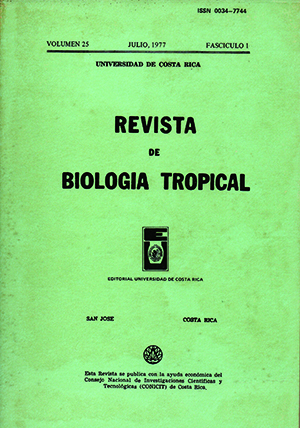Abstract
Under the scanning microscope the epidermal cells of the leaf of Vigna unguiculata are irregular, mostly polygonal. The adaxial (upper) and the abaxial (Jower) surfaces exhibit two kinds of trichomes: some hooked hairs with a dilated base, and abundant glandular, multicellular hairs. The leaf is amphistomatic; the number of stomata per mm2 is similar in both surfaces. The ostioles are quite small and without any ornamentation. Veins are straight, and more pubescent abaxially. The cuticle is irregular on the areolar epidermis and striated on the veins.References
Acosta, J. C., & M. L Petrache 1960. The transfer of the bushy character from cowpea (Vigna sinensis [Linn.] Savi) to sitao (Vigna sesquipedalis Fruw.). Philipp. Agric., 43: 535-547.
Ezedinma, F. O. C. 1965. Some studies on the vegetative and reproductive patterns in cowpea (Vigna unguiculata [L.] Walp.) in Southern Nigeria. Nigerian Agric. J., 21: 32-34.
Flores, Eugenia M., Aná M. Espinoza, & Y. Kozuka 1977. Ultraestructura de la epidermis foliar de Phaseolus vulgaris L. Turriaba, 26 (En prensa).
León, J. 1968. Fundamentos botánicos de los cultivos tropicales. Instituto Interamericano de Ciencias Agrícolas, Lima.
Metcalfe, C. R., & L. Chalk 1950. Anatomy of the dicotyledons. Ciaren don Press, Oxford.
Pillemer, E. A., & W. M. Tingey 1976. Hooked trichomes: a physical plant barrier to a majar agricultural pest. Science, 193: 482-484.
Solereder, H. 1908. Systematic anatomy of the dicotyledons. Clarendon Press, Oxford.
Troll, W. 1938. Vergleiehende Morphologie der hoheren Pflanzen. Gebrüder Borntraeger, Berlin.
Comments

This work is licensed under a Creative Commons Attribution 4.0 International License.
Copyright (c) 1977 Revista de Biología Tropical


